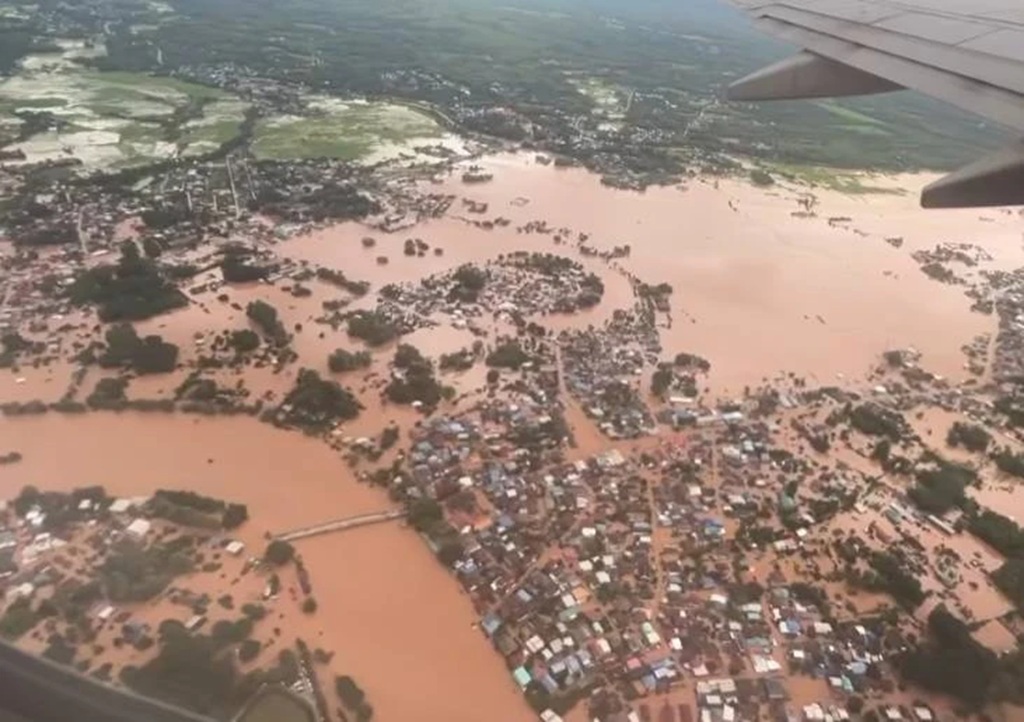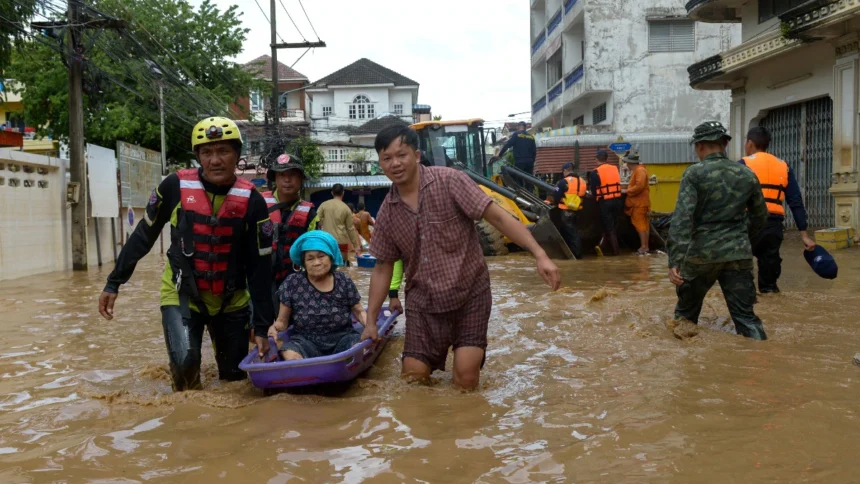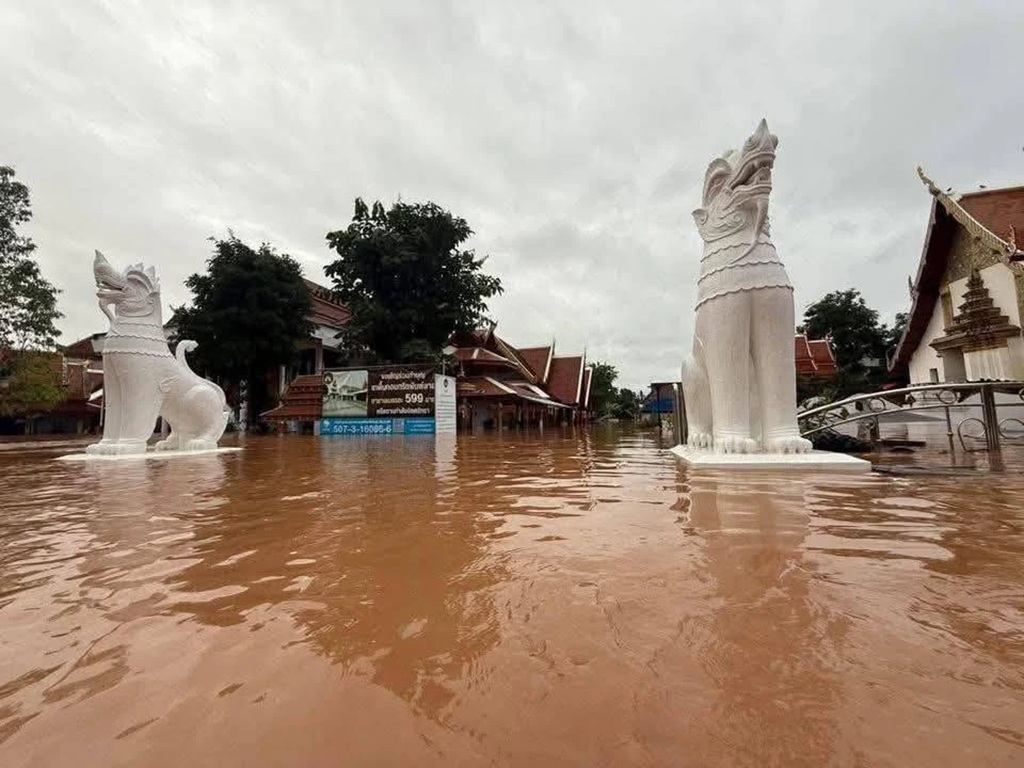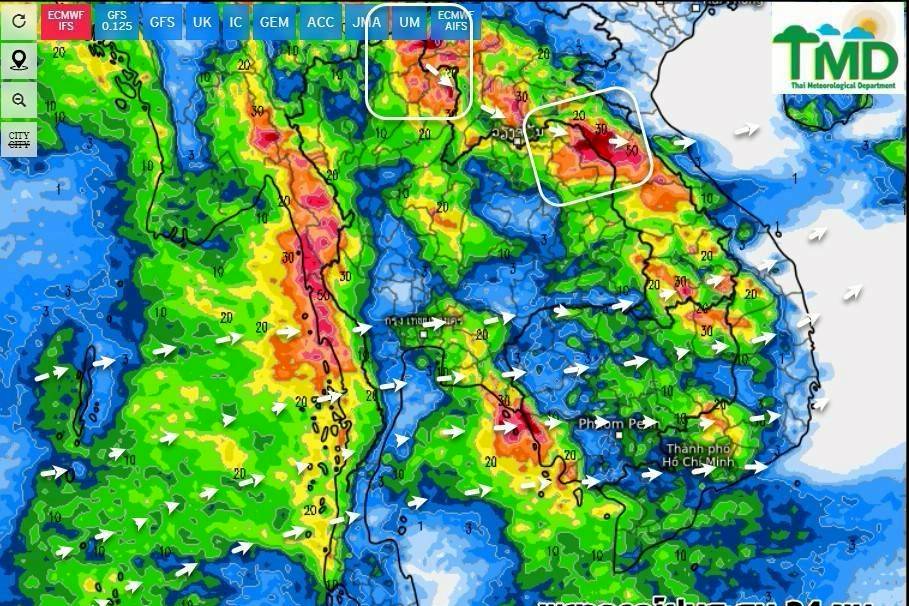CHIANG RAI – Mr. Saharat Wongsakulwiwat, Deputy Director-General of the Department of Disaster Prevention and Mitigation, shared that the agency has been closely monitoring Tropical Storm Wipha in Northern Thailand.
Tropical Storm Wipha followed the monsoon trough passing over northern Laos and northern Thailand, causing flash floods, runoff and landslides in several areas. From July 21 to July 27, flood situations affected nine Northern Thailand provinces: Nan, Chiang Rai, Phayao, Lampang, Chiang Mai, Mae Hong Son, Phrae, Sukhothai and Loei. In total, 55 districts, 263 sub-districts and 1,416 villages were impacted.
Around 33,899 households or 115,855 people felt the effects. There has been one missing person and one death. As of 6:00 a.m. on July 27, four provinces still face ongoing issues: Nan, Chiang Rai, Phrae and Sukhothai.
These cover 23 districts, 108 sub-districts and 450 villages, where about 23,790 households and 76,868 people remain affected. Water levels are generally dropping, except in Sukhothai, where they continue to rise.

Mr. Saharat said the flood and landslide situation triggered by Tropical Storm Wipha is easing in many locations in Northern Thailand, and efforts have shifted to restoring affected communities. The goal is to help residents return to normal life as soon as possible.
All provinces have been asked to coordinate with relevant agencies to clean homes, public roads and community spaces. Repair teams have been sent to fix homes, essential services, electricity, water supply and communications.
Local governments in Northern Thailand have also been told to survey and record the damage quickly so aid can be provided according to regulations. In areas still experiencing flooding, local authorities are working at full capacity, partnering with both government and private groups, as well as foundations.
Teams are dividing work zones to make sure help reaches everyone quickly and efficiently.
For provinces still at risk, rapid response units must be ready to act as soon as residents or agencies request assistance. Mr. Saharat stressed the need to keep these teams on standby.
He also mentioned that, even though the overall situation is improving, the Department of Disaster Prevention and Mitigation remains alert. The agency keeps tracking developments closely, especially downstream in Phrae, Sukhothai, Phitsanulok and Phichit.
These areas could be affected by floods from upstream from July 27 to 29. There is also ongoing monitoring of water levels along the Mekong River to watch for possible river overflows.
At-risk provinces in northern Thailand have been urged to keep a close eye on water levels and warn residents, especially those in low-lying zones, to be ready to move belongings to higher ground. If conditions become dangerous, local authorities should coordinate with the National Disaster Warning Centre to send real-time alerts to people in risk areas using Cell Broadcast.
Evacuation plans should be set up in case situations become worse. Regional disaster prevention offices need to check their teams and equipment, making sure they are ready to respond anywhere needed.
48-Hour Heavy Rain Warning for Northern Thailand
The Meteorological Department has issued a warning for the next 48 hours, highlighting ongoing thunderstorms and scattered rain in many areas already dealing with flooding. Affected provinces include Chiang Rai, Nan, Phrae, Phayao, Uttaradit, Ubon Ratchathani, Amnat Charoen, Sakon Nakhon, Nakhon Phanom, Mukdahan, Nong Khai, Bueng Kan, Nong Bua Lamphu, Udon Thani, Chanthaburi, and Trat. The department notes that rainfall is expected to decrease across the country after July 29, through to August 10.
According to the latest daily rainfall forecast (measuring from 7:00 am to 7:00 am the next day), and wind patterns at the 925 hPa level (about 750 metres above sea level), the data for the next 15 days (from July 27 to August 10) comes from the European Centre for Medium-Range Weather Forecasts (ECMWF). This forecast uses colour codes where red shows heavy rain, and green indicates light showers.
For July 27 and 28, scattered rain and thunderstorms are still expected in upper Thailand. Most areas will see light to moderate rain, with some spots getting heavy showers. Flooded provinces in the upper north and eastern regions (Chiang Rai, Nan, Phrae, Phayao, Uttaradit) are at risk of more rain.
If you plan to travel to the north, especially to flood-hit areas, check road conditions before heading out. Those visiting coastal provinces in the south or east should also be careful, as the wind and waves are still quite strong.
From July 29 to August 10, the country will see a drop in rainfall, but some showers will linger. Most rain will be light to moderate, still due to the influence of the southwest monsoon. In the south, rain will likely increase towards the end of the month, while winds and waves will ease, allowing for more normal activities. However, watch for showers and storms in the late afternoon or evening.
At this time, no storms are expected to enter Thailand. Most rain continues to come from the seasonal monsoon, so there is little cause for major concern.
Anyone can track water levels, rainfall, forecasts and risk area alerts through the Thai Disaster Alert (TDA) app. Updates and public safety news are also shared on the Department’s Facebook page (DDPM), X (@DDPMNews) and Line Official Account “ปภ.รับแจ้งเหตุ 1784” which can be reached by adding Line ID @1784DDPM. Those needing urgent help can call the disaster hotline 1784, available 24 hours, to get support as needed.
















